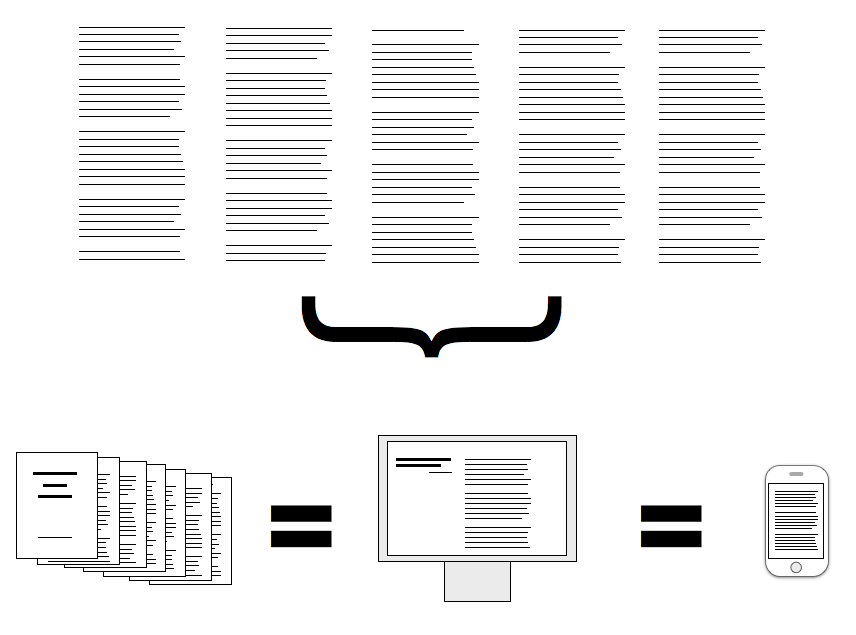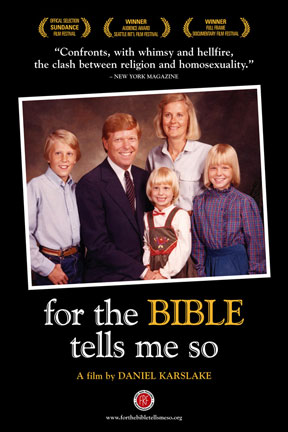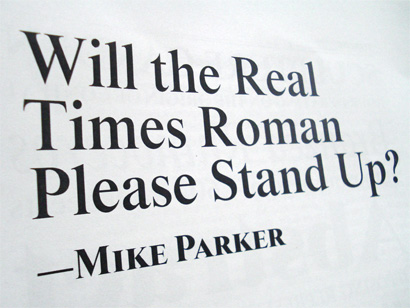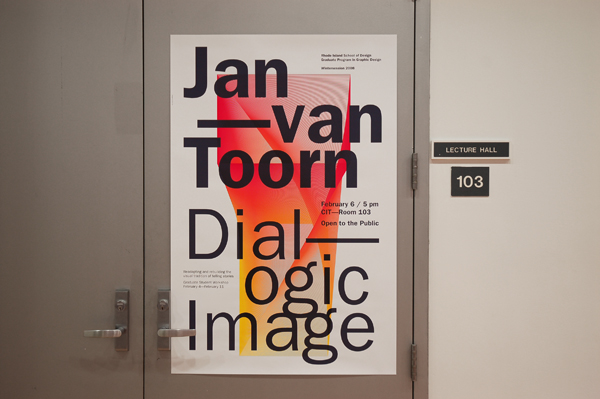Archive for the ‘discussion’ category
Teaching in a Time of Uncertainty
Meditation on the doubt creeping into today’s design practice.
By Constantin Boym

Postcard image by Ken Brown.
Since the beginning of professional industrial design — throughout the entire 20th century and into the first decade of the 21st — a designer has been a figure of confidence and authority. He (rarely, she) provided answers, solved problems, knew more than the public could possibly knew. A notion of an unsure designer, a questioning designer, or, heaven forbid, a doubtful designer would appear almost oxymoronic, and certainly unprofessional.
Perhaps the new decade will go down in history as marking the outset of Design Uncertainty. For the first time ever, designers are willing to question, openly and publicly, the nature of their profession and whether they are doing the right thing. This year, for the first time, an interrogation mark appeared in the title of the National Design Triennial at the Cooper-Hewitt. In the Netherlands, Eindhoven Design Academy’s 2010 exhibition in Milan expressed the same spirit of inquiry with an even more succinct title, a simple “?”
The reasons for self-searching and doubt are obvious, and they are not pretty. Two seemingly never-ending wars have contributed to political uncertainty and fueled fears of terrorism. The economic meltdown of 2008 continues to reverberate around the world. An unimpeded flood of oil gushes out in the Gulf of Mexico, in spite of the feats of the world’s best experts to stop it. Alice Rawsthorn, writing in The New York Times, recently captured the spirit of our time when she referred to design as “a quest for meaning in a dystopian era.” This existential mission, rather than a pursuit of new shapes, is going to define the design effort for years to come. And any search for meaning always starts with a question.
Clive Dilnot, a professor at The New School University, writes in an essay titled “Ethics? Design?” that the basis of any design activity derives from a fundamental query posed by Socrates: “How should one live?” According to Dilnot, this question cannot lead to a singular answer. Rather, the argument is brought up again and again by every new generation, leaving the ethical dimension of design “always in question, always in doubt.”
It is not surprising that the best design schools are in the forefront of design’s quest for meaning. Unencumbered by market considerations, academia is well suited for experimentation, creative research and the production of ideas. It is good to be a student in times like these. But what about the teachers? The traditional role of all-knowing professor is rapidly changing. Instead, a teacher has become a fellow researcher, a team leader who works with the group in an interactive, collaborative way. The result is inevitably interdisciplinary: a design “product” could be an idea, a service, a material or a narrative, and it is viewed as a process rather than an artifact.
With these thoughts I start a new chapter in my professional life. Recently, I have become director of graduate design studies at the Virginia Commonwealth University in Qatar. All complexities and contradictions on the modern world are reflected in the microcosm of this Persian Gulf state: East and West, old and new, national and global, rich and poor. This is a world in transition, full of its own uncertainties. As such, it should be a great testing ground for new ideas and new solutions. A small group of young men and women from different design backgrounds are joining our program, the first of its kind in the entire Gulf Region. Let the experiment begin. Together, we will be trying to work out our own answers to that nagging question, Why Design Now?
via http://changeobserver.designobserver.com/entry.html?entry=14378
Books in the Age of the iPad
The Core of Things
For too long, the act of printing something in and of itself has been placed on too high a pedestal. The true value of an object lies in what it says, not its mere existence. And in the case of a book, that value is intrinsically connected with content.
Let’s divide content into two broad groups.
- Content without well-defined form (Formless Content (Fig. 1))
- Content with well-defined form (Definite Content (Fig. 2))
Formless Content can be reflowed into different formats and not lose any intrinsic meaning. It’s content divorced from layout. Most novels and works of non-fiction are Formless.
When Danielle Steele sits at her computer, she doesn’t think much about how the text will look printed. She thinks about the story as a waterfall of text, as something that can be poured into any container. (Actually, she probably just thinks awkward and sexy things, but awkward and sexy things without regard for final form.)
Content with form — Definite Content — is almost totally the opposite of Formless Content. Most texts composed with images, charts, graphs or poetry fall under this umbrella. It may be reflowable, but depending on how it’s reflowed, inherent meaning and quality of the text may shift.
http://craigmod.com/journal/ipad_and_books/


FMyChinaLife.com
Recently, a TV repairman was fixing my TV. I pointed out that the TV screen was also really unclear and asked why. He ran his finger across the screen, swiping away a thick layer of Beijing dirt and dust to reveal sharp images and colors beneath. “It’s just really dirty,” he said. FMCL
U.S. residents fight for the right to hang laundry
 Reuters – Carin Froehlich has help from her granddaughter Ava as they hang some laundry in the front yard of her …
Reuters – Carin Froehlich has help from her granddaughter Ava as they hang some laundry in the front yard of her …
PERKASIE, Pennsylvania (Reuters) – Carin Froehlich pegs her laundry to three clotheslines strung between trees outside her 18th-century farmhouse, knowing that her actions annoy local officials who have asked her to stop.
Froehlich is among the growing number of people across America fighting for the right to dry their laundry outside against a rising tide of housing associations who oppose the practice despite its energy-saving green appeal.
Although there are no formal laws in this southeast Pennsylvania town against drying laundry outside, a town official called Froehlich to ask her to stop drying clothes in the sun. And she received two anonymous notes from neighbors saying they did not want to see her underwear flapping about.
“They said it made the place look like trailer trash,” she said, in her yard across the street from a row of neat, suburban houses. “They said they didn’t want to look at my ‘unmentionables.’”
The Whitney’s Re-Design: Web Done (Nearly) Right
I don’t envy those who have to redesign the website for a museum – balancing institutional structure and needs with the requirement that it reflect the appropriate aesthetic. Moreover, the process of transitioning a sensibility to the web in itself requires decisions about what the organization represents – a staid, classical collection would justifiably be nervous about embracing an open engagement of the general public.The Metropolitan Museum, for example, probably won’t be holding a contest on YouTube any time soon. Its website, which looks like it was created by a medium sized corporation in 2002, is staid, muted, and tucked behind a splash screen. The Museum of Modern Art’s website, by contrast, is, well, modern, with a palette and structure that would bore Mies van der Rohe. It’s the Obama of websites – so cool, it’s dull.
Late last night, the Whitney Museum of American Art, known for its modern and contemporary exhibitions and its Biennial, unveiled the latest example from this world. It’s a great improvement over what was there yesterday, though that’s a low hurdle to conquer. Yesterday, the site was a card catalog. Today, it’s a website.
http://www.mediaite.com/online/the-whitneys-re-design-web-done-nearly-right/
Post-Digital
Screens are getting boring. It’s really hard to impress anyone with stuff on a screen any more. However clever you’ve been. However much thought you’ve put in. However good the tech is. No-one’s impressed. They’ve all seen better stuff in ads and movies anyway - when will onscreen stuff be as good as that? Whereas doing stuff in the real world still seems to delight and impress people. Really simple stuff with objects looks like magic. Really hard stuff with screens still just looks like media.
http://russelldavies.typepad.com/planning/2009/01/meet-the-new-schtick.html
Teaching craft in a designed world
By: Nick de la Mare, Published: Sep 22, 2009
Having gone through a traditional graphic design undergraduate and industrial design graduate education in craft-based schools, and now teaching in a graduate design program at another, I often wonder how to best prepare the designers of tomorrow for the problems they’ll face in a changing world. The generalist issues I deal with at work are very different that the ones I encountered during my education, but as my work evolves, more and more I find myself relying on skills that I learned in school.
The role of craft within design has become increasingly relevant. As design becomes more of a generalist field, with designers expected to be conversant in a far wider variety of areas than in the past, it’s important that we have a process to lean on, a foundation to build upon, and an understanding of how it, and we, became this way.
To start with, I think you have to understand “craft” both as it relates to design (graphic and industrial), but also how it relates to larger culture. You can do this by looking at the changing role and definition of craft throughout recent history. Broadly speaking (and to generalize horribly) everything was smooth sailing until the industrial revolution of the 19th century. At that point, mass production gave rise to the designed (or machine-made) object, displacing craft from its historic role in the specialized, skill-based making of applied objects. “Thinking is making” became “Thinking about making.”

An unfortunate side effect of mechanization was the sidelining of traditional craft (one-of-a-kind objects, created by a craftsman or specialist user of tools) from mainstream production. In that equation primacy was awarded to the thinking-man and generalist controller of machine and process (the “designer”). Interestingly, a similar intellectual vs. skill-based split occurred in fine art the early 20th century with the rise of Duchamp’s “conceptual,” ready-made objects. Fine art has never really recovered: witness Damien Hirst et al. But that’s another story.
The cultural changes that led to the displacement of craft within larger society have been the subject of much theoretical and political posturing and debate, the result of which is our confusion about where and how craft fits into contemporary design. Karl Marx, for example, spent much time detailing the relative values of the machine-made object vs. the craft-object in capitalist society. One of Marx’s key arguments was that the division of labor necessary for volume production in the modern factory or workshop was a tool used by the controlling classes to limit the minds and education of the ordinary worker (in a capitalist society the worker would have a shallow understanding of machine-centric tasks rather than the deep understanding of a tool-based skill-set that might exist in other cultures). Keep in mind that Marx was, of course, advocating a non-capitalist economic system.
For a number of reasons, including the dominance of traditional craft-based fields in art schools, the personal value systems of educators, and the intellectual history of many art schools as craft academies, the pre-Industrial Revolution convention of deep, hands-on specialization across narrowly defined core disciplines is still prevalent in academia. This has made life difficult for applied design fields like graphic design and industrial design, which swim in the capitalist economy where more generalized skills, mass-production and the machine economy are facts of life. The response from many applied design departments has been to advocate deep, craft-based understanding during the undergrad education process (often at the expense of theory) and then to flip entirely and focus on theory at the expense of making at the graduate level.

I think at this point it’s important to remember that craft, by definition, is fundamentally a dedicated mastery of a chosen subject matter, not necessarily just the deep understanding of a specific material or tool. Richard Sennett, in The Craftsman, cites a commonly understood 10,000 hour figure as the time needed to master any particular skill, from violin, to carpentry, to painting, to surgery:
“As skill progresses, it becomes more problem-attuned, such as the lab technician worrying about procedure—whereas people with primitive levels of skill struggle just to get things to work. At its higher reaches, technique is no longer a mechanical activity; people can feel fully and think deeply about what they are doing, once they do it well.”
If you think of craft as the dedication to “do a job well for its own sake” as Sennett does, then it becomes easier to create bridges between a theory-based and skill-based school of thought. His point is that “craftsmanship focuses on objective standards, on the thing itself. Social and economic conditions, however, often stand in the way of the craftsman’s discipline and commitment: schools may fail to provide the tools to do good work, and workplaces may not truly value the aspiration for quality…” Craft ” focuses on the intimate connection between hand and head. Every good craftsman conducts a dialogue between concrete practices and thinking; this dialogue evolves into sustaining habits, and these habits form a rhythm between problem solving and problem finding.”
I would argue that, as designers moving inexorably further from specialist to generalist roles, we need to be better at both identifying and teaching the underlying habits and structure that lie between practice and thinking, and using those habits until they become second nature. When we can rely on structures to support our advances into unknown design problems, we don’t worry as much about taking the first step, or screwing up the execution of our idea. Those on the making side must focus more on the theory and reasoning behind the things they create, and vice versa; those on the theoretical side must hone their ability to create. Ultimately the best-looking thing is meaningless if there’s nothing behind the façade, and the best story is useless if nobody can understand it. My sense is that at the most fundamental level, as designers we need to focus on gaining resolution in the tension between concrete practices and thinking.
As more and more of our design problems become entirely systemic or have no physical instantiation, we must rely on craft-based structures to guide us. There is probably always going to be some gulf between those that value “thinking is making” and those that value the intellect or concept over the physical. If we understand the principles that lead to that confusion or tension, we can recognize the gulf as it happens and try to design reconciliation.
Foundation in design school used to be seen as gaining knowledge in a certain physical process (typography, printing, color theory etc.) but those tactical tools in themselves fall short of the needs designers face today. Technology is moving at such a pace that we can’t hope to spend 10,000 hours in any one discipline and be certain that the discipline itself will remain relevant or timely. Luckily we can offset some of our learning time to the tools themselves. It doesn’t take as much time to gain mastery of Photoshop and pixels as it does to master a lathe and to understand grain patterns of wood. Thus, we can focus on the process behind the tools themselves, abstracting the tool to a behavior (a balance of both theory and making) that can be applied to any number of design problems. This allows us flexibility while also staying true to the changing nature of craft itself.
http://creativity-online.com/news/teaching-craft-in-a-designed-world/139195
On the Tip of Creative Tongues

The word “curate,” lofty and once rarely spoken outside exhibition corridors or British parishes, has become a fashionable code word among the aesthetically minded, who seem to paste it onto any activity that involves culling and selecting. In more print-centric times, the term of art was “edit” — as in a boutique edits its dress collections carefully. But now, among designers, disc jockeys, club promoters, bloggers and thrift-store owners, curate is code for “I have a discerning eye and great taste.”
http://www.nytimes.com/2009/10/04/fashion/04curate.html?pagewanted=1&ref=style
Social Networking Tools and our Future Society
In The Smooth and the Striated, Delueze and Guattari talk of the constant shift from striated space to smooth space and back. Neither space can exist on its own, and one continually sets the stage for the other to spring up from within it. A rational, gridded city as an example of the striated, will always have in it the smooth space of organic neighbourhood growth, community groups and homeless drifters. The internet first serving as a point-A-to-B information exchange route (point-to-point movement being a characteristic of striated space as opposed to smooth space where points do not terminate a path), became a space for people to become producers, creating and sharing new information, activities and ideologies—Benjamin’s description of the ideal production apparatus in the hands of the proletariat. However, as prescribed of organic and planned forces intermingling, the smooth space of the internet has bred a new striated space of ’social networking tools’, tools which threaten the act of production.
With “social networking tools”, such as facebook, we have stopped communicating directly with each other and instead ‘update’ our ’status’ via ‘wall posts’. We do not personally invite our friends with a phone call or email, but create an ‘event’ in the confines of the ’social networking tool’ which our network of real-life friends may not learn of if they are not a part of that insular network. We don’t express grief or even news of losing a grandparent other than by creating a status update that you are ‘going to a funeral’. The empathic connections between members of a society are cut, and without the feelings of kinship, care, respect, etc. the human connections in a society are severed and social responsibilities to each other are lost.
http://spacecollective.org/Xrene/4463/Social-Networking-Tools-and-our-Future-Society
Denizen: For Third Culture Kids

Denizen is an online magazine dedicated to Third Culture Kids, also known as TCKs.
What is this about?
Third Culture Kids are the citizens of the future. We possess the globalized views and diverse experiences that are necessary in a ever-shrinking world. We will be the leaders of tomorrow, and will help others navigate this globalized society.
Unfortunately, we also struggle with identity, relationships, visas and careers in our unique TCK way. Denizen’s journalists and artists will help us muddle through these challenges by fostering a virtual TCK community.
TCKs are rarely citizens of the places they live. Instead, they are denizens, people who are “admitted rights to residence,” people who become inhabitants after “regularly frequenting a place.” We’re hoping that Denizen will become your online home, one that you’ll regularly frequent to share your unique TCK experience with others who simply “get it.”
For The Bible Tells Me So

A Sundance film festival documentary I went to go see last week.
The documentary follows 5 very normal, very American and very Christian Families and their journey with a homosexual son or daughter. It deals with their struggles, the impact of parents reactions on their child. A very moving experience to see if they are able to overcome their prejudices and come together as a family.
It also draws upon roughly 5 bible verses that people in the past has used to condemn homosexuality, however experts urge people to understand the historical and scholarly context in order to see these verses in a new light.
For The Bible Tells Me So - website and trailer
The only animation in the movie - a comedic take to explain if it is a choice, shown right after a very serious segment:
School of Visual Arts MFA Design Criticism Lecture Series
School of Visual Arts MFA Design Criticism Lecture Series
Fall 2008: Tuesdays, 6:00-8:00 p.m.
136 West 21st Street, 2nd Floor
RSVP 212.592.2228 or dcrit@sva.edu.
You are warmly invited to attend the D-CRIT Fall Lecture Series, to see our new department and to meet with speakers, faculty members
and students over drinks. Space is limited; RSVP as soon as possible.
October 28: Rob Giampietro, “On Design, Distribution, and
Circulation”
Rob Giampietro is a designer, writer and teacher. He has
written essays and design criticism for publications including BusinessWeek,
Design Observer, Emigre and Dot Dot Dot. He teaches at Parsons The New
School for Design in New York and has also taught in the graduate graphic
design program at Rhode Island School of Design.
October 31: Rick Poynor, “The Observer Self-Critiqued:
Design Columns and Design Criticism”
*Please note that this lecture takes place on Friday at
4:00 p.m.
Rick Poynor founded London’s Eye magazine in 1990, which
he edited for seven years. He has written about design, media and visual
culture for Adbusters, Blueprint, Domus, The Financial Times, Frieze, The
Guardian, Harvard Design Magazine, Icon, I.D., Metropolis and Print, among
other publications. His books include Typographica (2001), and No More Rules
(2003). His collected essays appear in Design Without Boundaries (1998) and
Obey the Giant: Life in the Image World (2001).
November 4: Elyssa Dimant, “‘In Rogue’: Crafting Fashion
Criticism”
Elyssa Dimant is a fashion historian and writer,
contributing to publications such as Vogue, Zink and CITY Magazine, for
which she is a regular fashion columnist. She co-curated the exhibition
“WILD: Fashion Untamed” at the Metropolitan Museum of Art and co-authored
the accompanying catalogue of the same name (Yale University Press, 2004).
November 11: James Sanders, “Begin with the Screen: Using
Film to Explore Issues of Architecture and Design”
James Sanders is a New York-based architect, designer, and
writer. His landmark study on architecture and film, Celluloid Skyline: New
York and the Movies became the basis for a major multimedia exhibit in Grand
Central Terminal in 2007. With Ric Burns, Sanders co-wrote the public
television series, “New York: A Documentary Film.” Sanders has written for
The New York Times, The Los Angeles Times, Vanity Fair, and Architectural
Record. His newest book is Scenes from the City: Filmmaking in New York
(Rizzoli, 2006).
November 18: Eugenia Bell, “Design, Observed: Writing
Design and Architecture.”
A New York-based writer and critic, Eugenia Bell is the
design editor of Frieze magazine, where she writes and commissions articles
on design and architecture. Her experience in writing and publishing also
includes work for the Princeton Architectural Press, the Victoria and Albert
Museum, the Walker Art Center and the University of Michigan Taubman College
of Architecture and Urban Planning.
November 25: Allan Chochinov, “Design and the Blog Space”
A frequent lecturer on the impact of design on
contemporary culture, Allan Chochinov is a partner of Core77, a New
York-based design network serving a global community of designers and design
enthusiasts. He is editor-in-chief of Core77.com, a widely-read website
focusing on product design; Coroflot.com, a job and portfolio site serving
designers and employers across all design disciplines; and
Designdirectory.com, an online database linking design firms with
corporations seeking strategic design services.
December 2: Pat Kirkham, “Writing Critical Monographs:
Case Studies of Ray and Charles Eames & Elaine and Saul Bass”
Pat Kirkham is a professor of design history and cultural
studies at the Bard Graduate Center in New York and has written widely on
design, gender and film. Her publications include: The Gendered Object
(1996); Charles and Ray Eames: Designers of the Twentieth Century (1998) and
Women Designers in the USA, 1900-2000: Diversity and Difference (2002). Her
latest book is on the work of graphic designer and filmmaker Saul Bass that
studies his short films made in collaboration with his wife Elaine.
December 9: Chee Pearlman, “Designing the Live Content
Experience”
Chee Pearlman is the director of editorial and curatorial
design consultancy Chee Company. She has written for a number of
publications, including Newsweek, Travel + Leisure, Popular Science and The
New York Times and is the former Editor-in-Chief of I.D. Magazine. Her past
projects have included serving as program director of the Art Center Design
Conference in Los Angeles and founding the Chrysler Design Awards.
December 16: Cathleen McGuigan, “The Role of Design
Criticism in the National Press”
Cathleen McGuigan is a senior editor and writer at
Newsweek, where she covers architecture, design and culture. She is an
adjunct professor at the Graduate School of Journalism, Columbia University,
and has been a Loeb Fellow at the Harvard University School of Design. She
has written for The New York Times Magazine, Smithsonian, Rolling Stone,
Harper’s Bazaar and ArtNews.
SVA MFA in Design Criticism
Design Criticism Department . School of Visual Arts
209 East 23 Street . New York, NY 10010-3994
http://dcrit.sva.edu
Culture Jamming
Ernst Bettler is a fictional Swiss graphic designer. He was invented by Christopher Wilson in a 2000 hoax article published in the second issue of Dot Dot Dot, a magazine of visual culture.
According to the article, Bettler was asked in the 1950s to design advertisement posters for Pfäfferli+Huber (P+H), a Swiss pharmaceutical manufacturer. The article states that Bettler knew of the company’s involvement in Nazi concentration camp experiments and decided to accept the commission with the intention of damaging P+H. The four posters he created, Wilson’s article recounts, were exemplary works of International Typographic Style design, advertising P+H drugs such as “Contrazipan”. However, according to the article, the posters featured abstract compositions that could be read as capital letters – spelling out “N - A - Z - I” when displayed in sequence. Wilson’s article states that the public outcry that followed the public display of the posters ruined P+H in a matter of weeks.
Even though it was highly detailed and featured many photographs and illustrations, the article was a complete fabrication. Ernst Bettler, Pfäfferli+Huber and its drugs do not exist, and neither do the Swiss towns “Sumisdorf” and “Burgwald” that feature in the article – their names are presumably based on the real Swiss towns of Sumiswald and Burgdorf. Nonetheless, the story was well received in graphic design circles. Among others, the September/October 2001 “Graphic Anarchy” issue of Adbusters magazine hailed Bettler’s work as “one of the greatest design interventions on record”, and the 2002 graphic design textbook “Problem Solved” by Michael Johnson covers Bettler as one of the “founding fathers of the ‘culture-jamming‘ form of protest”.
via Wikipedia.
Single Men’s Kit
Much like Ling Lings, kit for single people, this is a kit more specifically for single men.
8 products included with many sketches for other ideas.
ITEM #6

When the woman of the single man‘s dreams visits spontaneously, all her needs are fulfilled with the women-kit. It contains hair conditioner, facial creme, a toothbrush and a pad to remove the makeup
the round PAD for makeup looks more like a condom…SEE MORE
MEWE Design Alliance
INTERVIEWER: There seems to be a western influence in your work although none of you ever studied or worked abroad. Where do you think that comes from?
MEWE: ‘Even if you have never eaten pork you have seen the pig running’!
READ ARTICLE ABOUT UP AND COMING CHINESE DESIGNERS

Designers showcased in CHINA DESIGN NOW.
Power of Celebrities
The Welcome to Beijing olympic video is really interesting. Not something unique to Chinese, but it is a really common technique to have to have celebrities share a song or phrases together like this. I saw it all the time in HK. Regardless of this technique, it still captivated me because there were so many celebrities, and like nelson said, not all are in the mainland. But I think what makes it powerful is because I doubt they did pay all the celebrities wads of cash like they would receive for a regular advertisement. I do feel there is a sense of patriotism, that each person, regardless of how busy, rich and famous are believe this is a good thing that they stand behind. And as a collective, it is quite moving.
Which reminded me of the ONE campaign. A similarly powerful campaign utilizing celebrities to take a stand and urge the public to do the same. I’m sure you guys are familiar with this video, but check it out again and experience the impact of this emotional attachment.
So it is as powerful without high production and familiar faces.
Or if it not in a familiar language.
I Believe in…Press

Chinese press:
WorldJournal
Mingpao
Epochtimes
TIMES

Starling is the New Times
If you are 100% convinced that Stanley Morrison designed Times New Roman, you might want to listen to Mike Parker’s account, where he explains how Starling Burgess is the designer of Times New Roman, having drawn it in 1904, 28 years before Monotype designed it. Font Bureau is releasing Starling, a revival of the original Times New Roman, shown above. Starling will come with an Ultra weight that looks absolutely delicious.
link: SpeakUp UC
“HIPSTER RUNOFF” A social commentary blog

I know a lot of people say that ‘fashion is just clothes’ and that fashion doesn’t even matter…BUT THEY R WRONG. (They are not deep enough to ‘get’ fashion)
While a lot of street fashion bloggers wouldn’t even notice this girl on the street, they don’t realize that her outfit provides important commentary on life, society, terrorism, performance enhancing drugs, race-relations, the media, the blogosphere ruining journalism, divorce, GHEY marriage, and how humans are different & the same at the same time. It’s a clash, yall. A constant 1, and the only way we can elect the President that God wants in office is to ‘find ourselves’ and the vote based on ‘who we are.’
We need to find out who we are as soon as possible. We must enroll in Art Colleges, obtain design degrees, and change the world, and the way that we look at it, and how we can tell people to stop using gasoline to buy fast food, and go to more music+art+technology festivals.
When u look at the pictured female, ask urself what her outfit represents.
What do the dots repesent?
What do the stripes represent?
How do the stripes and the dots convey differences and similarities?
What’s up with Palestine and Israel?
What’s up with the USA and brown-ish countries?
What’s up with France and Australia?
What’s up with mainstreamers and alts?
Will we all ever co-exist and learn to live and love eachother?
Will movie studios produce more Existential Comedies involving Dustin Hoffman to make the world a better place?
I just want every1 to be able to think critically, like a college professor who has a ‘rlly demanding’ class where you get a “B”, but you ended up finding yourself, your major, and what society is all about.
Fashion is beautiful, yall.
Life is beautiful, all yall.
Fashion = Life = Beautiful
(Yall^3)
Never Forget.
RISD vs YALE
Ken Meier: Yale

Hoon Kim: RISD

Now that we are free..things to see.
I’m trying to compile a things we can go see and do. Feel free to add.
And let’s see which ones we are interested in going to.
AIGA
upcoming talks/events.
WEDNESDAY 21 MAY 2008 6:30 – 8:00PM
Design Remixed: Molly Wright Steenson
FRIDAY 23 MAY 2008 6:30 – 9:00PM
IN/VISIBLE: Graphic Data Revealed
Fresh Dialogue 24
MET
Jeff Koons on the Roof
April 22, 2008–October 26, 2008
Superheroes: Fashion and Fantasy
May 7, 2008–September 1, 2008
MOMA
Take your time: Olafur Eliasson
April 20–June 30, 2008
New Museum
Current
Paul Chan 7 lights
4/9/08 - 6/29/08
Third Floor
Brooklyn Museum
Murakami
April 5–July 13, 2008
may 17 -20
(Members of the general public are welcome on Tuesday, May 20 when the ICFF is open to all comers. )
needs 50bucks tho
also new york design week
-mooooon
OPT extended…if ur good enough.
The U.S. Department of Homeland Security released today an interim final rule extending the period of Optional Practical Training (OPT) from 12 to 29 months for qualified F-1 non-immigrant students. The extension will be available to F-1 students with a degree in science, technology, engineering, or mathematics who are employed by businesses enrolled in the E-Verify program.
“This rule will enable businesses to attract and retain highly skilled foreign workers, giving U.S. companies a competitive advantage in the world economy,” said Homeland Security Secretary Michael Chertoff. “By extending the training period by an additional 17 months to students who are employed by businesses enrolled in E-Verify, we are further ensuring a legal workforce in the U.S. and aiding good corporate citizens.”
PHTHRD II
Hello!
We have a LVHRD event tomorrow night in Dumbo. 3 cool photographers (including Jonathan Harris of “we feel fine”, etc) will battle. Everyone is dressing up as grandmas, prizes, big open bar, it’s worth the small ticket price, check it out dude:
Hope to see you there..::mark
Copyright © _dreams. All rights reserved.


